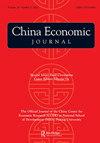At a crossroads: consequential trends in recognition of community-based forest tenure from 2002-2017
IF 2.3
Q1 ECONOMICS
引用次数: 34
Abstract
ABSTRACT Insecure, contested, and unjust forest tenure arrangements undermine forest investment and protection, fuel conflict, and jeopardize Indigenous Peoples’, local communities’, and indigenous and community women’s rights, livelihoods, and development prospects. While legally recognized community forests tend to have lower rates of deforestation, store more carbon and benefit more people than forests managed by either public or private entities, evidence shows over two-thirds of forests remain controlled by governments – a significant portion of which is contested by indigenous and local communities who traditionally own, manage, and depend on these forests. It is therefore all the more critical that governments support and advance communities’ forest tenure rights. Using longitudinal tenure data and analysis of global forest ownership trends developed by the Rights and Resources Initiative, this article details the distribution of statutory forest rights across 58 countries covering nearly 92% of global forests over the fifteen-year period from 2002–2017.十字路口:2002-2017年承认社区森林权属的相应趋势
摘要:不安全、有争议和不公正的森林保有权安排破坏了森林投资和保护,助长了冲突,并危及土著人民、当地社区以及土著和社区妇女的权利、生计和发展前景。尽管法律承认的社区森林往往比公共或私人实体管理的森林砍伐率更低,储存更多的碳,造福更多的人,但有证据表明,超过三分之二的森林仍然由政府控制,其中很大一部分受到传统上拥有、管理、,并依赖这些森林。因此,政府支持和促进社区的森林保有权就显得尤为重要。利用权利与资源倡议开发的纵向保有权数据和全球森林所有权趋势分析,本文详细介绍了2002-2017年15年期间58个国家法定森林权利的分布情况,覆盖了全球近92%的森林。
本文章由计算机程序翻译,如有差异,请以英文原文为准。
求助全文
约1分钟内获得全文
求助全文

 求助内容:
求助内容: 应助结果提醒方式:
应助结果提醒方式:


